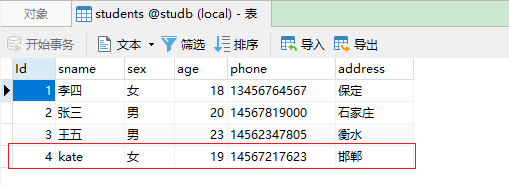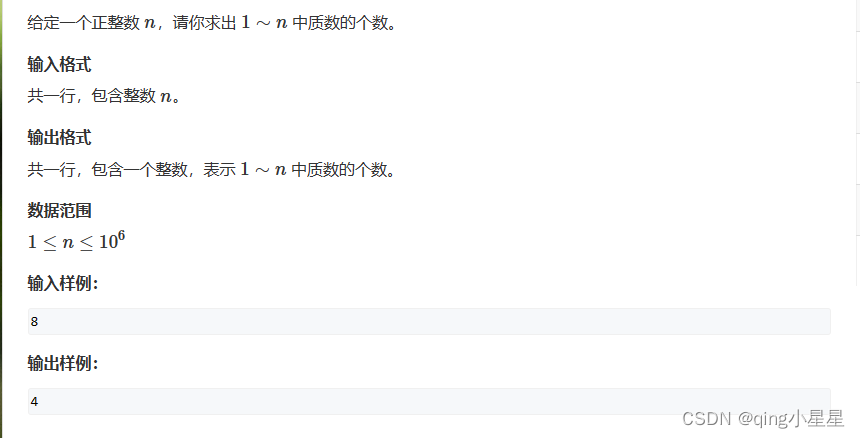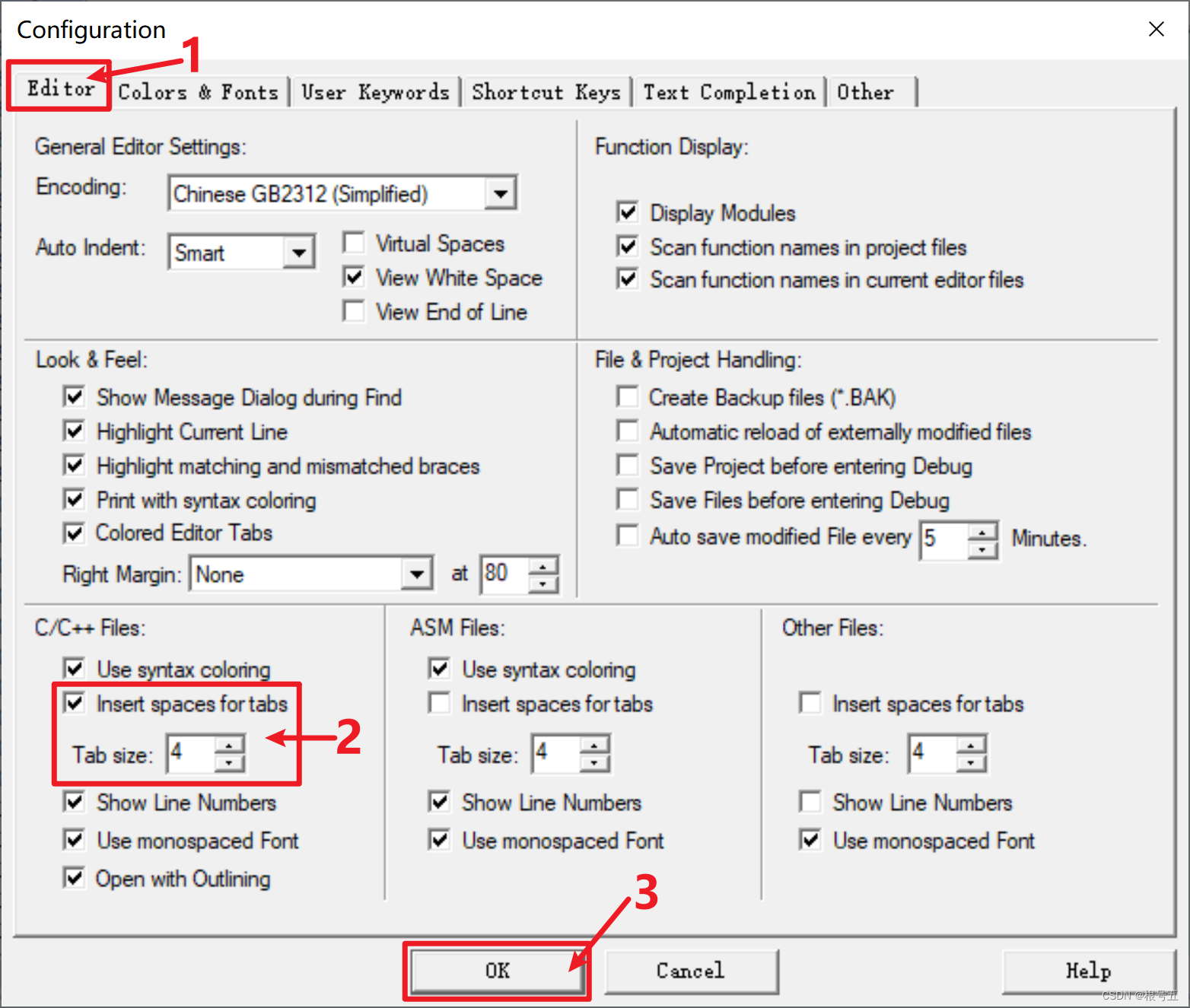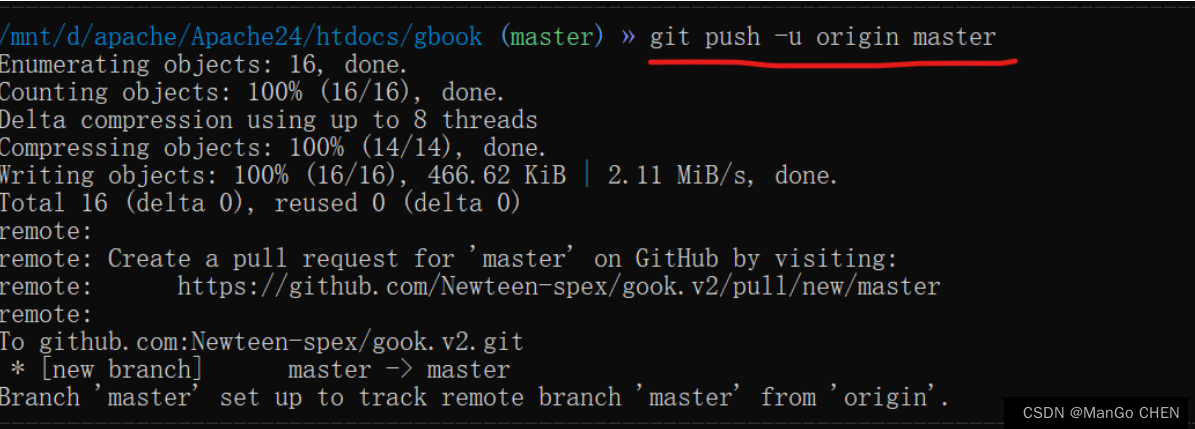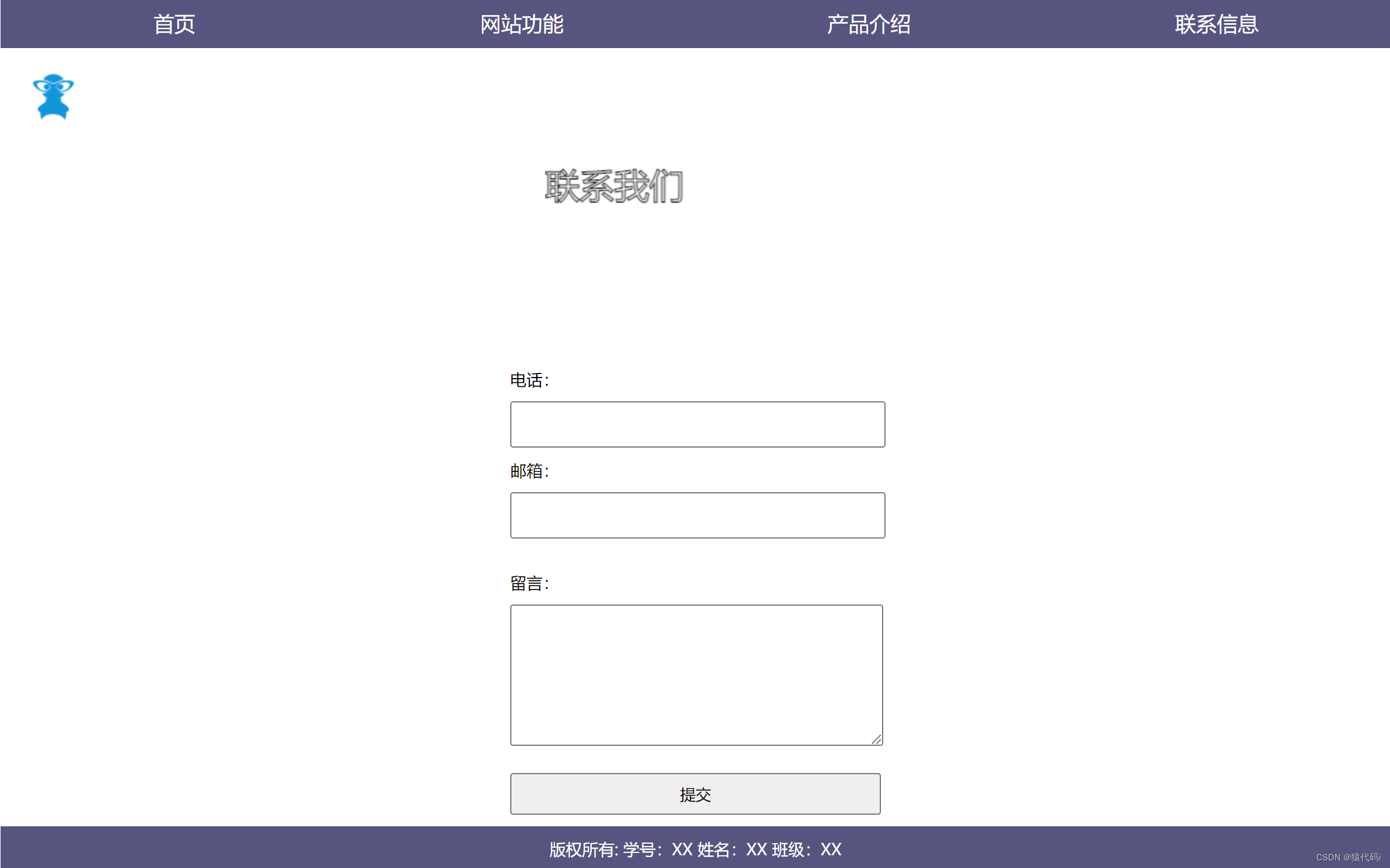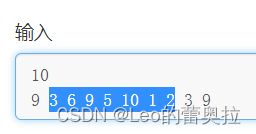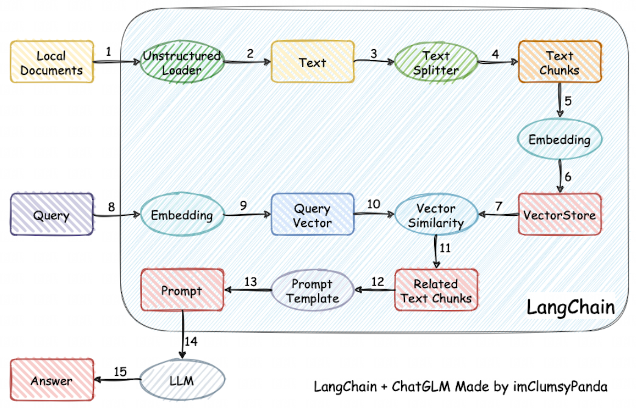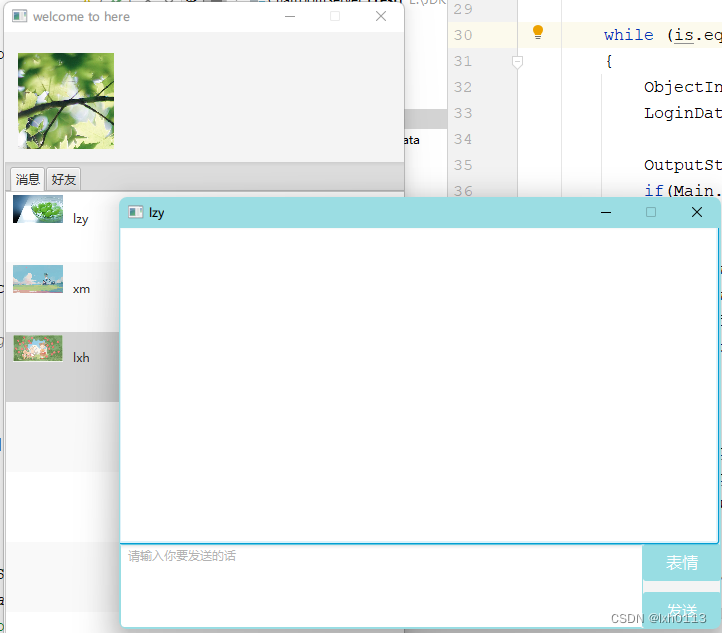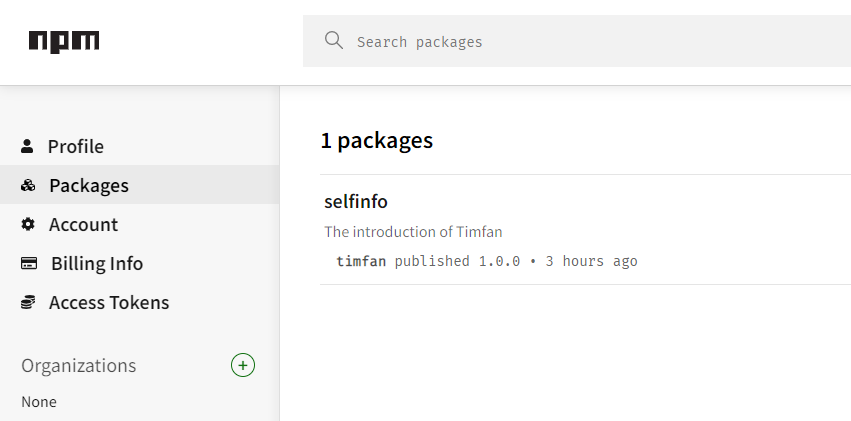Masonry
文章目录
- Masonry
- NSLayoutConstraint用法
- Masonry源码
Masonry在我们之前的学习中是一个非常有用的第三方库。
Masonry是一种基于Objective-C语言的轻量级布局框架,它可以简化iOS应用程序中的自动布局任务。Masonry提供了一个方便的API,可以编写更加简洁和易于阅读的代码来创建约束。使用Masonry,您可以通过链式调用方法来设置视图之间的约束关系,而无需直接操作NSLayoutConstraint对象。
简单来说,Masonry就是封装了NSLayoutConstraint对象。
在学习源码之前,我们先来看看NSLayoutConstraint的用法:
NSLayoutConstraint用法
在 Objective-C 中,NSLayoutConstraint 是一种用于定义视图之间关系的类。它可以让开发者通过代码的方式来描述视图之间的布局约束,从而实现自动化布局。通过使用 NSLayoutConstraint,开发者可以使得 iOS 应用在不同尺寸和方向的设备上都能够呈现出良好的布局效果。
NSLayoutConstraint 可以用来描述视图距离、大小、比例等方面的约束条件,例如一个视图需要与另一个视图保持一定距离,或者两个视图需要保持相同的宽度和高度。
NSLayoutConstraint 的创建通常需要指定两个视图(或者一个视图和父视图)以及一个属性,即要约束的属性。然后,可以设置这个属性的值,以及关于这个属性的其他限制条件。最后,将该约束添加到对应的视图上,即可实现对视图之间布局的控制。
示例:
// 创建父视图
UIView *containerView = [UIView new];
containerView.translatesAutoresizingMaskIntoConstraints = YES;
containerView.backgroundColor = UIColor.yellowColor;
containerView.frame = CGRectMake(100, 100, 200, 200);
[self.view addSubview:containerView];
// 创建子视图
UIView *redView = [UIView new];
redView.translatesAutoresizingMaskIntoConstraints = NO;
redView.backgroundColor = UIColor.redColor;
[containerView addSubview:redView];
// 创建约束条件:view2 距离 view1 的四周都有 20 的间距
NSLayoutConstraint *constraint1 = [NSLayoutConstraint constraintWithItem:redView
attribute:NSLayoutAttributeRight
relatedBy:NSLayoutRelationEqual
toItem:containerView
attribute:NSLayoutAttributeRight
multiplier:1.0
constant:-20];
NSLayoutConstraint *constraint2 = [NSLayoutConstraint constraintWithItem:redView
attribute:NSLayoutAttributeBottom
relatedBy:NSLayoutRelationEqual
toItem:containerView
attribute:NSLayoutAttributeBottom
multiplier:1.0
constant:-20];
NSLayoutConstraint *constraint3 = [NSLayoutConstraint constraintWithItem:redView
attribute:NSLayoutAttributeLeft
relatedBy:NSLayoutRelationEqual
toItem:containerView
attribute:NSLayoutAttributeLeft
multiplier:1.0
constant:20];
NSLayoutConstraint *constraint4 = [NSLayoutConstraint constraintWithItem:redView
attribute:NSLayoutAttributeTop
relatedBy:NSLayoutRelationEqual
toItem:containerView
attribute:NSLayoutAttributeTop
multiplier:1.0
constant:20];
// 将约束条件添加到视图上
[self.view addConstraints:@[constraint1, constraint2, constraint3, constraint4]];
展示效果:
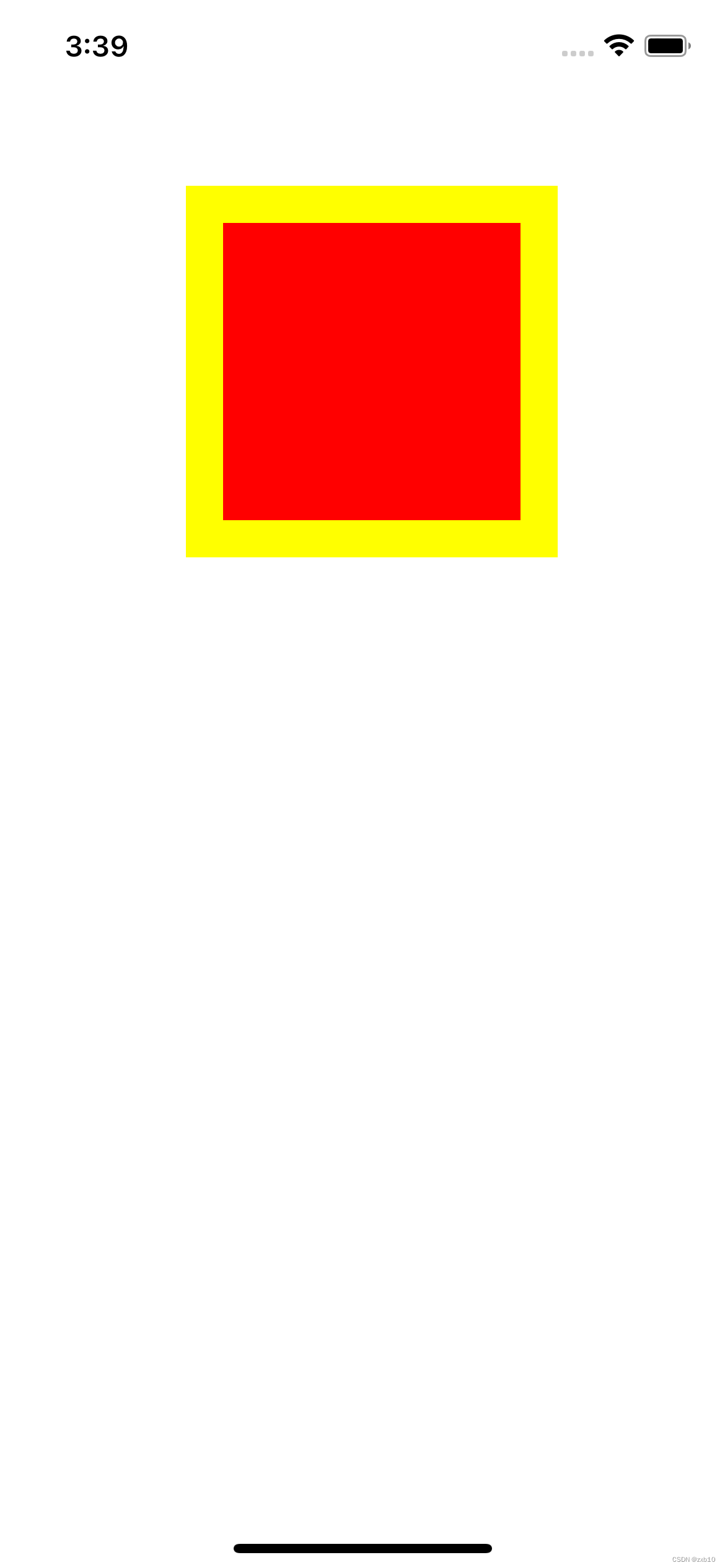
我们看到有一个UIView的属性:
translatesAutoresizingMaskIntoConstraints
translatesAutoresizingMaskIntoConstraints是一个布尔属性,用于设置是否自动将视图的AutoresizingMask转换为Autolayout约束。当该属性为true时,UIView的frame和bounds值可以通过直接修改来重新定义视图位置和大小,并且不会影响其Autolayout约束。但是,在使用Autolayout时,为了能够正确地响应任何约束变化,建议将该属性设置为false。
Masonry源码
Masonry中的类名字比较类似,很容易搞混淆,我们先来看看这几个常用的类以及他们之间的关系:
- MASConstraint:这个类表示一个约束条件,它包含了一个视图和一个属性,以及相关的关系和乘数等信息。
- MASViewConstraint:这是MASConstraint的子类,表示一个包含两个视图之间的约束条件。
- MASCompositeConstraint:这个类表示多个约束条件的组合。它可以用来对一组视图应用相同的布局规则。
- MASConstraintMaker:这个类是用来创建约束条件的入口点。它提供了一组类似于DSL的API,用于创建常见的约束条件,如等宽、等高、上下左右边距等。
- MASLayoutConstraint:这个类是Masonry内部使用的私有类,它负责将MASConstraint对象转换成NSLayoutConstraint对象,并将其添加到视图上。
- MASViewAttribute:是一个Masonry框架中的类,用于表示视图的特定属性。它可以用来创建和布局视图之间的约束。
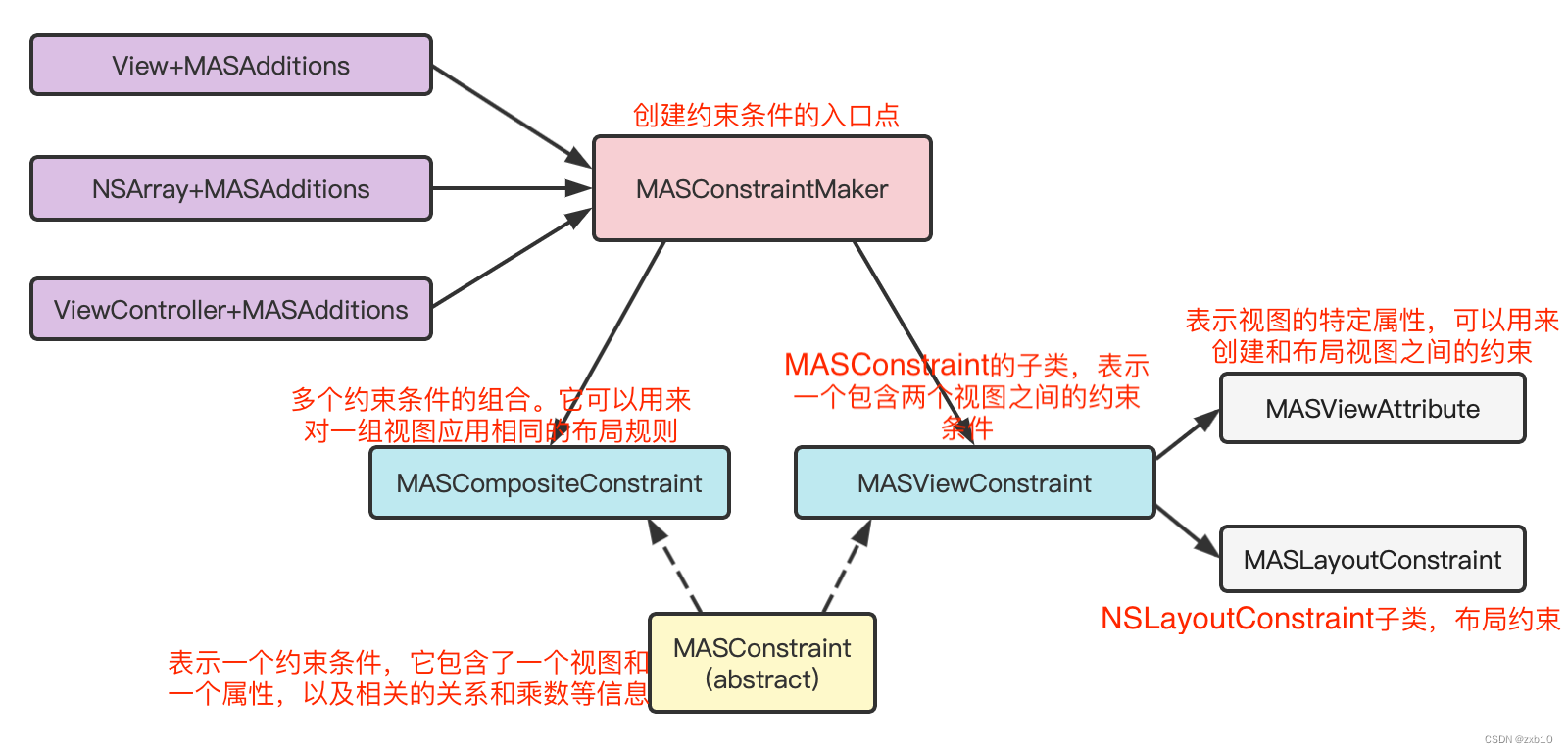
一个最简单的Masonry:
[view1 mas_makeConstraints:^(MASConstraintMaker *make) {
make.width.height.mas_equalTo(@10);
make.centerX.mas_equalTo(self.view.mas_centerX);
make.top.mas_equalTo(self.view.mas_top).offset(20);
}];
我们点进去这个mas_makeConstraints方法:
//View+MASAdditions.h
- (NSArray *)mas_makeConstraints:(void(^)(MASConstraintMaker *))block {
self.translatesAutoresizingMaskIntoConstraints = NO;
//这个属性刚刚讲到过,所以用Masonry就可以不用设置这个属性了
MASConstraintMaker *constraintMaker = [[MASConstraintMaker alloc] initWithView:self];
block(constraintMaker);
return [constraintMaker install];
}
在该方法中调用constraintMaker的初始化方法,传给该方法要设置约束的view,生产maker对象,传给block回调出去,然后再调用maker的install方法。
//MASConstraintMaker
- (id)initWithView:(MAS_VIEW *)view {
self = [super init];
if (!self) return nil;
self.view = view;
self.constraints = NSMutableArray.new;
return self;
}
在initWithView:会记录下要设置约束的当前view,同时创建一个数组用来存储即将使用maker添加的约束。在传给mas_makeConstraints方法的block参数中,使用回调出来的maker进行一一添加约束。下面是使用make.width点语法后的全部内部调用过程:
// MASConstraintMaker
- (MASConstraint *)width {
return [self addConstraintWithLayoutAttribute:NSLayoutAttributeWidth];
}
- (MASConstraint *)addConstraintWithLayoutAttribute:(NSLayoutAttribute)layoutAttribute {
return [self constraint:nil addConstraintWithLayoutAttribute:layoutAttribute];
}
- (MASConstraint *)constraint:(MASConstraint *)constraint addConstraintWithLayoutAttribute:(NSLayoutAttribute)layoutAttribute {
// 根据约束属性和视图创建一个约束单元
MASViewAttribute *viewAttribute = [[MASViewAttribute alloc] initWithView:self.view layoutAttribute:layoutAttribute];
//创建约束,以约束单元作为约束的第一项
MASViewConstraint *newConstraint = [[MASViewConstraint alloc] initWithFirstViewAttribute:viewAttribute];
if ([constraint isKindOfClass:MASViewConstraint.class]) {
//replace with composite constraint
// 如果是在已有约束的基础上再创建的约束,则将它们转换成一个 组合约束,并将原约束替换成该组合约束。
NSArray *children = @[constraint, newConstraint];
MASCompositeConstraint *compositeConstraint = [[MASCompositeConstraint alloc] initWithChildren:children];
compositeConstraint.delegate = self;
// 这里会将原来 make.width 添加的约束 替换成一个 组合约束(宽度约束 + 高度约束)
[self constraint:constraint shouldBeReplacedWithConstraint:compositeConstraint];
// 返回组合约束
return compositeConstraint;
}
if (!constraint) {// 如果不是在已有约束的基础上再创建约束,则添加约束至列表
newConstraint.delegate = self;// 注意这一步,会对 make.top.left 这种情形产生关键影响
[self.constraints addObject:newConstraint];
}
return newConstraint;
}
在第二次设置约束时(.height)会进入不同的流程。注意上面提到的newConstraint.delegate设置代理:
//MAConstraint
- (MASConstraint *)height {
return [self addConstraintWithLayoutAttribute:NSLayoutAttributeHeight];
}
//MSViewConstraint
- (MASConstraint *)addConstraintWithLayoutAttribute:(NSLayoutAttribute)layoutAttribute {
NSAssert(!self.hasLayoutRelation, @"Attributes should be chained before defining the constraint relation");
//delegate是MASConstraintMaker
return [self.delegate constraint:self addConstraintWithLayoutAttribute:layoutAttribute];
}
// MASConstraintMaker
//还是走到刚刚那个方法那里
- (MASConstraint *)constraint:(MASConstraint *)constraint addConstraintWithLayoutAttribute:(NSLayoutAttribute)layoutAttribute {...}
接着来看看.mas_equalTo(@100)的流程:
// MASConstraint
#define mas_equalTo(...) equalTo(MASBoxValue((__VA_ARGS__)))
- (MASConstraint * (^)(id))equalTo {
return ^id(id attribute) {
// attribute 可能是 @100 类似的值,也可能是 view.mas_width等这样的
return self.equalToWithRelation(attribute, NSLayoutRelationEqual);
};
}
- (MASConstraint * (^)(id))mas_equalTo {
return ^id(id attribute) {
return self.equalToWithRelation(attribute, NSLayoutRelationEqual);
};
}
// MASViewConstraint
- (MASConstraint * (^)(id, NSLayoutRelation))equalToWithRelation {
return ^id(id attribute, NSLayoutRelation relation) {
if ([attribute isKindOfClass:NSArray.class]) {//是数组(有多个约束)
NSAssert(!self.hasLayoutRelation, @"Redefinition of constraint relation");
NSMutableArray *children = NSMutableArray.new;
for (id attr in attribute) {
MASViewConstraint *viewConstraint = [self copy];
viewConstraint.layoutRelation = relation;
viewConstraint.secondViewAttribute = attr;// 设置约束第二项
[children addObject:viewConstraint];
}
MASCompositeConstraint *compositeConstraint = [[MASCompositeConstraint alloc] initWithChildren:children];
compositeConstraint.delegate = self.delegate;
[self.delegate constraint:self shouldBeReplacedWithConstraint:compositeConstraint];
return compositeConstraint;
} else {//单个约束
NSAssert(!self.hasLayoutRelation || self.layoutRelation == relation && [attribute isKindOfClass:NSValue.class], @"Redefinition of constraint relation");
self.layoutRelation = relation;
self.secondViewAttribute = attribute;// 设置约束第二项
return self;
}
};
}
// 设置约束第二项
- (void)setSecondViewAttribute:(id)secondViewAttribute {
if ([secondViewAttribute isKindOfClass:NSValue.class]) { //数字等
[self setLayoutConstantWithValue:secondViewAttribute];
} else if ([secondViewAttribute isKindOfClass:MAS_VIEW.class]) { //frame等
_secondViewAttribute = [[MASViewAttribute alloc] initWithView:secondViewAttribute layoutAttribute:self.firstViewAttribute.layoutAttribute];
} else if ([secondViewAttribute isKindOfClass:MASViewAttribute.class]) { //约束对象
_secondViewAttribute = secondViewAttribute;
} else {
NSAssert(NO, @"attempting to add unsupported attribute: %@", secondViewAttribute);
}
}
// MASConstraint
- (void)setLayoutConstantWithValue:(NSValue *)value {
if ([value isKindOfClass:NSNumber.class]) {
self.offset = [(NSNumber *)value doubleValue];
} else if (strcmp(value.objCType, @encode(CGPoint)) == 0) {
CGPoint point;
[value getValue:&point];
self.centerOffset = point;
} else if (strcmp(value.objCType, @encode(CGSize)) == 0) {
CGSize size;
[value getValue:&size];
self.sizeOffset = size;
} else if (strcmp(value.objCType, @encode(MASEdgeInsets)) == 0) {
MASEdgeInsets insets;
[value getValue:&insets];
self.insets = insets;
} else {
NSAssert(NO, @"attempting to set layout constant with unsupported value: %@", value);
}
}
// MASViewConstraint
- (void)setOffset:(CGFloat)offset {
self.layoutConstant = offset; // 设置约束常量
}
- (void)setSizeOffset:(CGSize)sizeOffset {
NSLayoutAttribute layoutAttribute = self.firstViewAttribute.layoutAttribute;
switch (layoutAttribute) {
case NSLayoutAttributeWidth:
self.layoutConstant = sizeOffset.width;
break;
case NSLayoutAttributeHeight:
self.layoutConstant = sizeOffset.height;
break;
default:
break;
}
}
- (void)setCenterOffset:(CGPoint)centerOffset {
NSLayoutAttribute layoutAttribute = self.firstViewAttribute.layoutAttribute;
switch (layoutAttribute) {
case NSLayoutAttributeCenterX:
self.layoutConstant = centerOffset.x;
break;
case NSLayoutAttributeCenterY:
self.layoutConstant = centerOffset.y;
break;
default:
break;
}
}
- (void)setInsets:(MASEdgeInsets)insets {
NSLayoutAttribute layoutAttribute = self.firstViewAttribute.layoutAttribute;
switch (layoutAttribute) {
case NSLayoutAttributeLeft:
case NSLayoutAttributeLeading:
self.layoutConstant = insets.left;
break;
case NSLayoutAttributeTop:
self.layoutConstant = insets.top;
break;
case NSLayoutAttributeBottom:
self.layoutConstant = -insets.bottom;
break;
case NSLayoutAttributeRight:
case NSLayoutAttributeTrailing:
self.layoutConstant = -insets.right;
break;
default:
break;
}
}
再看如果约束对象是一个控件(mas_equalTo(self.view.mas_top)),那么就会走进下面的这段代码:
else if ([secondViewAttribute isKindOfClass:MASViewAttribute.class]) {
_secondViewAttribute = secondViewAttribute;
}
另外,后面的 offset 方法做了一步额外的操作:
// MASConstraint
- (MASConstraint * (^)(CGFloat))offset {
return ^id(CGFloat offset){
self.offset = offset;
return self;
};
}
- (void)setOffset:(CGFloat)offset {
self.layoutConstant = offset;
}
回到前面,block执行结束之后,调用了[constraintMaker install],下面看一下install方法的实现:
- (NSArray *)install {
// 只有在 mas_remakeConstraints 时,removeExisting 才为 YES
if (self.removeExisting) {
// 此时,需要先删除所有的约束
NSArray *installedConstraints = [MASViewConstraint installedConstraintsForView:self.view];
for (MASConstraint *constraint in installedConstraints) {
[constraint uninstall];
}
}
// 添加约束
NSArray *constraints = self.constraints.copy;
for (MASConstraint *constraint in constraints) {
// 设置约束的 updateExisting 属性
// 只有在 mas_updateConstraints 时,updateExisting 才为 YES
constraint.updateExisting = self.updateExisting;
[constraint install];
}
// 清空 constraints 数组缓存
[self.constraints removeAllObjects];
return constraints;
}
install 方法内部会对 constraints 列表中的所有约束依次执行各自的 install 方法来添加约束。我们来看一下约束的 install 方法:
// MASCompositeConstraint
- (void)install {
for (MASConstraint *constraint in self.childConstraints) {
constraint.updateExisting = self.updateExisting;
[constraint install];
}
}
// MASViewConstraint
- (void)install {
// 约束是否已被添加
if (self.hasBeenInstalled) {
return;
}
// 如果约束支持 isActive 方法,且 self.layoutConstraint 有值了
if ([self supportsActiveProperty] && self.layoutConstraint) {
if (@available(iOS 8.0, *)) {
self.layoutConstraint.active = YES;
} else {
// Fallback on earlier versions
}
[self.firstViewAttribute.view.mas_installedConstraints addObject:self];
return;
}
MAS_VIEW *firstLayoutItem = self.firstViewAttribute.item;
NSLayoutAttribute firstLayoutAttribute = self.firstViewAttribute.layoutAttribute;
MAS_VIEW *secondLayoutItem = self.secondViewAttribute.item;
NSLayoutAttribute secondLayoutAttribute = self.secondViewAttribute.layoutAttribute;
// alignment attributes must have a secondViewAttribute
// therefore we assume that is refering to superview
//对齐属性必须具有第二个ViewAttribute。因此我们假设它指的是超视图
// eg make.left.equalTo(@10)
if (!self.firstViewAttribute.isSizeAttribute && !self.secondViewAttribute) {
secondLayoutItem = self.firstViewAttribute.view.superview;
secondLayoutAttribute = firstLayoutAttribute;
}
// 生成一个 NSLayoutConstraint
MASLayoutConstraint *layoutConstraint
= [MASLayoutConstraint constraintWithItem:firstLayoutItem
attribute:firstLayoutAttribute
relatedBy:self.layoutRelation
toItem:secondLayoutItem
attribute:secondLayoutAttribute
multiplier:self.layoutMultiplier
constant:self.layoutConstant];
layoutConstraint.priority = self.layoutPriority;
layoutConstraint.mas_key = self.mas_key;
// 确定约束layoutConstraint 的约束层级(即要被添加到的位置)
if (self.secondViewAttribute.view) {
MAS_VIEW *closestCommonSuperview = [self.firstViewAttribute.view mas_closestCommonSuperview:self.secondViewAttribute.view];
NSAssert(closestCommonSuperview,
@"couldn't find a common superview for %@ and %@",
self.firstViewAttribute.view, self.secondViewAttribute.view);
self.installedView = closestCommonSuperview;
} else if (self.firstViewAttribute.isSizeAttribute) {
self.installedView = self.firstViewAttribute.view;
} else {
self.installedView = self.firstViewAttribute.view.superview;
}
MASLayoutConstraint *existingConstraint = nil;
if (self.updateExisting) {
existingConstraint = [self layoutConstraintSimilarTo:layoutConstraint];
}
if (existingConstraint) {
// just update the constant
// 约束存在,则更新constant值
existingConstraint.constant = layoutConstraint.constant;
self.layoutConstraint = existingConstraint;
} else {
// 约束不存在,则在该位置添加约束
[self.installedView addConstraint:layoutConstraint];
self.layoutConstraint = layoutConstraint;
[firstLayoutItem.mas_installedConstraints addObject:self];
}
}
无论是 MASCompositeConstraint 还是 MASViewConstraint,本质上还是调用 MASViewConstraint 的 install 方法。该方法根据 MASViewConstraint 的各个属性创建一个原生的约束(NSLayoutConstraint 类型),并在定位约束层级后,将约束添加到相应层级的视图上。

